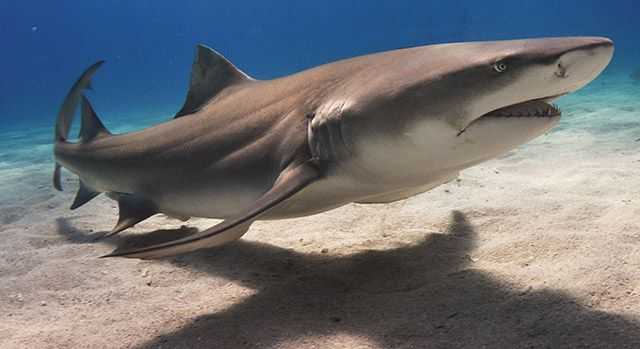
[dropcap]A[/dropcap]bove the surface, divers should expect weather conditions to become increasingly more favorable as the frequent cold fronts of January and February begin to subside. More opportunities to head offshore should allow divers to catch the tail end of the yearly lemon shark migration and take advantage of the last few weeks of lobster season. Spring brings an end to the large lemon shark breeding aggregations common of select reefs off Jupiter, but divers still have a chance to make a dive with these beautiful animals. Twenty to 30 sharks are common during peak mating season, and although their numbers begin to dwindle towards the end of March, many consider this a must-dive event this time of year.
Visibility on the Treasure Coast is quite predictable this time of year, provided an eye is kept to the wind. Strong northerly winds during the winter months should begin to fade allowing water to clear in a few days. Local beach cams at Jensen Beach and Bathtub Reef are great tools for watching real-time conditions for calm seas and good visibility. March 31st marks the end of spiny lobster season in Florida and the last chance to stock up for the summer. As the season comes to a close and spring begins, divers may notice a large increase in the number of egg-bearing female lobster found on area reefs. The bright orange eggs are easy to spot but are sometimes overlooked so divers are wise to double-check the underside of the tail for eggs, especially this time of year. Pregnant female lobster are easy to identify because they usually keep their tail curled up, protecting the eggs underneath. Care should be taken to avoid unnecessary damage to females during capture in order to increase their chances of survival and release of their offspring. Shallow reefs, like those found close to shore from Vero Beach south to Stuart, may be great places to check for an easy last minute bug. Divers can access these reefs from a boat or via the many public beach accesses on A1A. For a complete list of beach dive sites on the Treasure Coast, email steve.wood@deepsix.com.